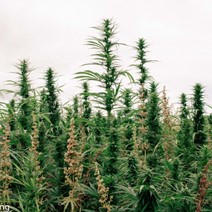
Land use fact sheet
Industrial hemp for seed or fibre
Industrial hemp can be grown for seed or for fibre.
It is promoted as a sustainable crop, because it can sequester large amounts of carbon dioxide and produce environmentally friendly food and fibre products.
The industrial hemp industry is growing rapidly in New Zealand with the ability to return good profits from relatively small blocks of land.
 Overview
Overview
Regions
Check that your area has access to processing facilities as well as contractors with hemp-specific equipment.
Growing conditions
Plant in well-drained, weed-free soil from October to mid-November, after the risk of frosts has passed.
Climate
Hemp can grow in anywhere in New Zealand as long as you can provide enough water at the right times.
Commercial scale
You will need around 10 hectares for a profitable crop. Some growers start with less if they are unsure about community support.
Getting started
Industrial hemp cropping is controlled by the Misuse of Drugs (Industrial Hemp) Regulations 2006. Growers must be licensed.
Skills / employment
Harvesting uses specialised equipment that has been designed or modified for hemp. Most growers use local contractors.
 Regions
Regions
Hemp seed crops produced in Bay of Plenty, Manawatū-Whanganui, Canterbury, Nelson, Waikato, Hawkes Bay and Wairarapa are most likely to be within transport distance of a processor. This is important because hemp seeds must be dried within a few hours of harvest, or they will begin to degrade.
Commercial fibre processing facilities are available in Canterbury. A North Island fibre processing facility is planned for 2022.
Get a report on your whenua
Enter the details of your whenua into our search to create a downloadable report showing information about the environment, economy, and climate in your region — and the potential that creates for development.
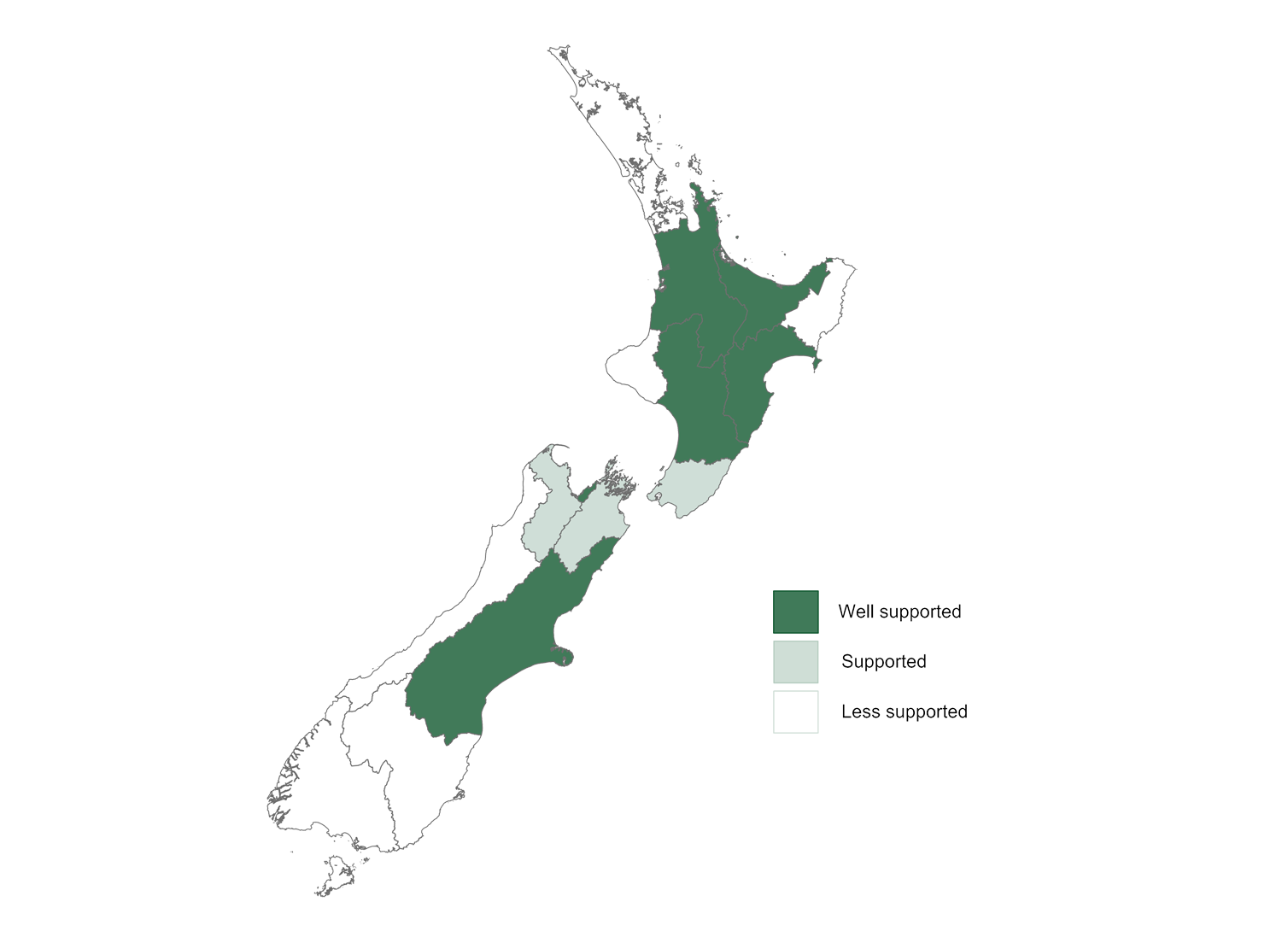
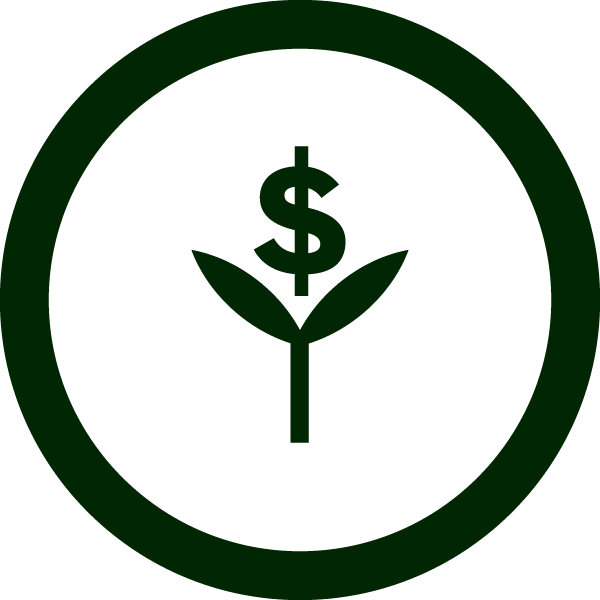 Commercial scale
Commercial scale
You will need around 10 hectares for a profitable crop.
Some owners will plant a smaller area in the first season, to make sure they have community support before committing to a larger crop.
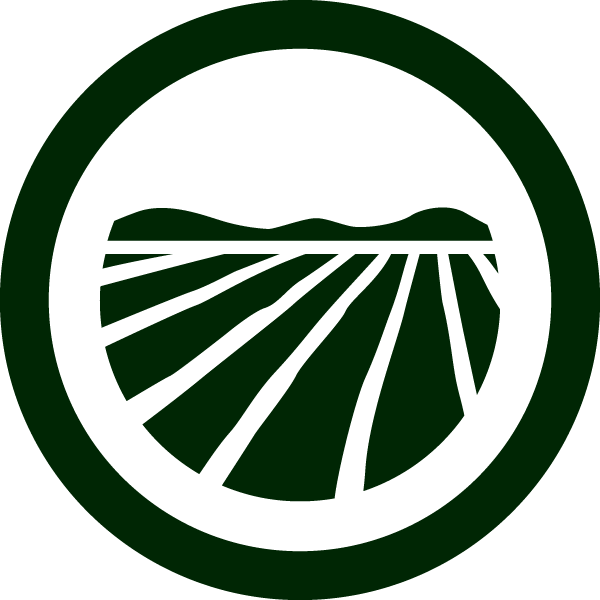 Getting into the industry
Getting into the industry
Misuse of Drugs Act 1975
Industrial hemp plants are low-THC varieties of the same plant that is used as a recreational drug. They are defined by legislation as Cannabis sativa varieties where:
- the combined THC and THCA content is less than 0.35% generally and no part of the plant tests over 0.5% of the dry weight of the plant, and
- seeds that are harvested from those plants.
Industrial hemp plants do not have enough THC or THCA to provide a ‘high’ so they cannot be used as a drug, but growing industrial hemp is still controlled by the Misuse of Drugs (Industrial Hemp) Regulations 2006, which are part of the Misuse of Drugs Act 1975.
Growers require an annual licence, which is issued by the Ministry of Health. More details are provided in the Compliance section of this fact sheet.
Engagement
People sometimes confuse industrial hemp with recreational cannabis. It is important to talk with your stakeholders about your plans. This could include:
- Trustees or owners of the whenua
- Māori landowners or beneficial owners
- your neighbours and other members of your community, and
- investors or backers.
Some growers plant a smaller area in the first season. This can help to ensure they have the necessary support before committing to a larger crop.
Machinery and processing equipment
The plants contain very strong fibres that can cause problems for machinery that has not been designed for hemp. You will need access to equipment that has been designed or modified to handle your plants, so it is important to know how you will be planting, harvesting, drying and transporting your crop well in advance of planting. Many small growers use a local contractor who manages plantings on multiple sites and who carries out the harvest.
Unlike many other grains, including wheat and maize, hemp seed is harvested from a living green plant. This means that the harvested crop is wet. The quality of the seed oil will begin to break down if drying doesn't begin within four hours, so make sure that you can deliver the crop to a processor or seed drying facility in time.
Processing window
Hemp seeds must be dried within four hours of harvest, or they will begin to degrade. If you do not have suitable drying facilities onsite you will need to be able to transport your seed crop to a processing facility within four hours.
Selling your product
There is an established domestic market for hemp seed and seed products. Whole seeds that are capable of growing can only be sold to another licence holder, such as a processor, but you can sell to any customer once the seeds have been processed into products that can't grow, such as seed hearts, meal, protein powder, or hemp seed oil.
The market for fibre is less developed but is expected to grow as more processing facilities become available.
Growing for seed or fibre
Fibre crops and seed crops are grown from slightly different varieties of industrial hemp plant. The two possible crops also have different management regimes, so you need to decide whether you are targeting fibre or seed before you start planting.
Fibre and seed crops are managed differently and are grown from slightly different varieties of industrial hemp, so you will need to decide whether you are targeting fibre or seed before you start planting.
Transporting fibre to a processor is expensive because it is very bulky, and seed crops need to be processed within a few hours, so make sure that you have a processor nearby. Talk to your nearest processors to make sure they can take your crop and that you are within their service range before you commit to planting.
The New Zealand Hemp Industries Association (NZHIA) provides a range of resources for people who are thinking about growing hemp on their land, including a public directory which contains the details of some of the seed and fibre processors around the country.
 Skills and employment
Skills and employment
Planting and cultivation uses standard equipment and can usually be completed by the grower.
Harvesting industrial hemp needs specialised equipment and is usually completed by contractors. Your contractor will need equipment designed or adapted specifically for hemp, as the tough fibres will often bind and damage machinery.
 Compliance
Compliance
Licensing
You must be licenced under the Misuse of Drugs (Industrial Hemp) Regulations 2006 in order to grow, trade in, or process industrial hemp. Your licence will last for one year. You will need to apply for a new licence each year that you plan to grow this crop. The Ministry of Health website provides more information about grower licencing.
Food products
Food products can be produced from the seeds but must not be produced from any other part of the plant, including flowers, buds or leaves. Seeds must be hulled, ground or crushed so that they are unable to grow. Whole seeds that are capable of being grown must not appear in products for retail sale.
If you are processing and selling hemp seed or oil products you must also meet the requirements of National Programme 1 under the Food Act 2014 to ensure that the products you are supplying to the market are safe to eat.
Sustainability
Hemp is considered to be a sustainable crop because weeds and pests can be controlled by management techniques, such as trapping and how seeds are planted, instead of using sprays. Like all crops, using good fertiliser management techniques will also reduce or prevent nutrient leaching.
Sometimes growers plant industrial hemp to use up nutrients that have run off from other crops or animal farming, in order to prevent leaching into sensitive areas like waterways.
National policy statement for freshwater management (NPSFM)
The National Policy Statement for Freshwater 2020 gives local authorities direction on how they should manage freshwater under the Resource Management Act 1991. As such, some local authorities require growers and farmers to create a Farm Environment Plan (FEP). Make sure you're familiar with the FEP expectations in your region. Check with your local council about the requirements for your whenua or planned development.
Even if your region doesn't yet require an FEP, it's good practice to put one in place for your whenua as part of your business plan. The Foundation for Arable Research (FAR) provides templates you can use to create an FEP.
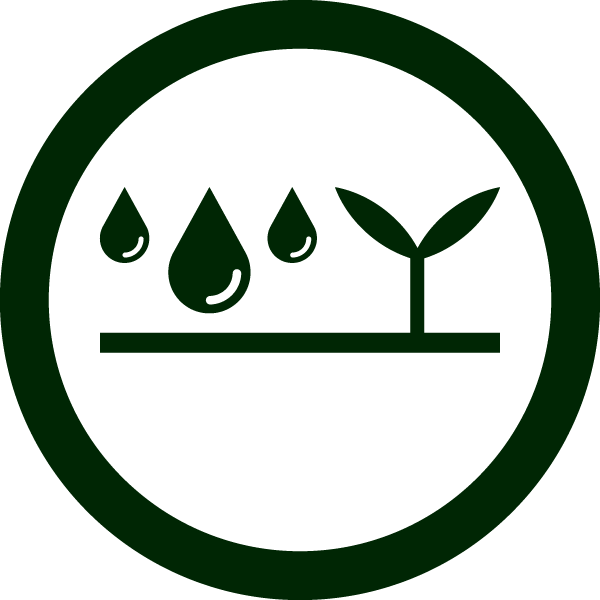 Growing conditions
Growing conditions
Industrial hemp grows best when planted in fertile, well-drained, weed-free soil after the risk of frosts has passed, usually between October and mid-November. This allows it to establish quickly and out-compete weeds, which removes the need for spraying.
As at 2019 there were 15 industrial hemp varieties registered for sale in New Zealand. The list of approved varieties is managed by the Ministry of Health and can be downloaded from their website.
Approved Cultivars of Industrial Hemp
You cannot purchase seeds until your licence has been issued. Plan ahead because hemp seed for sowing is often in tight supply.
There is limited information available about the best cultivars to grow in each region, so take the advice of your seed merchant and speak with other local growers about their experiences if possible.
Growing for fibre
Cultivars developed for fibre crops are tall, to maximise the length of the fibres obtained from the stems. Seeds are planted close together to encourage the plants to grow straight and fast, with no branches. The crop is harvested as soon as the male plants shed pollen, typically around 70 – 90 days after sowing (depending location and cultivar).
The crop is cut and left on the ground for 12 – 18 days to “ret”. Retting means allowing the stalks to decay in the field, in order to break down the stalks and allow the fibre to be separated from the woody material that makes up the rest of the stalk.
When retting is complete the stalks can be baled and transported for processing.
Fibre crops are bulky, so transport costs are high. Most fibre growers are within around 100 km of a fibre processing facility.
Growing for seed and dual-cropping
There are 2 types of cultivar used for growing seeds.
The first is specialised for seed crops only. These plants are shorter and have the heaviest yields. After harvesting the seeds, the stalks are shredded and left to rot in the field.
The second can be used for dual cropping. These plants are taller and less prone to branching than seed-specific cultivars. The seeds are harvested then the stalks are cut and left to ret in the field before being baled and transported for fibre processing. Dual cropping varieties produce a smaller seed crop and less fibre than fibre-specific cultivars. The fibre is also of lower quality.
Of the varieties currently available, the highest returns are being achieved from specialised seed crops. This may change as more processing facilities become available, reducing transport costs.
Timing is critical for seed harvest. Seeds ripen from the bottom of the plant up, so it is necessary to wait until at least 60% of the seed is mature. However, the longer the seed remains unharvested the more will be lost to birds and other pest damage.
More information
The New Zealand Hemp Industries Association (NZHIA) offers resources and other support to growers.
 Climate
Climate
Hemp is well suited to any region in New Zealand where rainfall of at least 75 -100 mm per month can be achieved during the first month of growth.
 Water
Water
Hemp seedlings require 75–100 mm of rain or irrigation during the first month of growth. This drops dramatically as the canopy and the tap roots develop however irrigation may be necessary in dry locations such as Canterbury, Tasman and Hawke's Bay.
 Market
Market
The global industrial hemp market is projected to grow from $4.6 billion US in 2019 to $26.6 billion US by 2025.
New Zealand is not exporting hemp products yet, but growing local demand provides immediate opportunities for expansion of the NZ hemp industry.
Hemp seeds are often marketed as a ‘superfood’ because of their unique combination of nutrients, particularly amino acids and essential fatty acids. As a result, seeds and the oil extracted from seeds are in demand for a range of food and cosmetic products.
Demand for hemp fibre for fabric is also growing locally and internationally as some consumer groups begin to trend away from petroleum-based synthetic fabrics. NZ Yarns have a fibre processing plant in Canterbury that uses bio-enzymes and other non-chemical methods to process hemp fibre. This will help to create a point of difference in export markets, as overseas companies tend to use harsh chemicals.
 Future industry
Future industry
The strength and durability of hemp fibre as well as the rapid and rampant growth rate of the plant itself are driving global research into a range of innovative uses.
Hempcrete, a concrete-like building material made from by-products of fibre production, is becoming more popular in Europe. Hemp's high cellulose content is being investigated for uses in 3D printing, bioplastics and biofuels.
Hemp fibre and by-products are also popular for use in industrial textiles, soft flooring and clothing.
 Operational costs
Operational costs
Costs for growing a hemp crop varies by region, depending on contractor costs and availability of equipment.
Average costs for a seed crop in the 2019-2020 season were around:
- $2,500 per hectare for planting, cultivation and harvesting costs, and
- $511.11 annual licencing cost.
Average costs for a fibre crop in the 2019-2020 season were around:
- $2,000 per hectare for planting, cultivation and harvesting costs, and
- $511.11 annual licencing cost.
Transport costs for seed and fibre will depend on your distance from the processor. Transport for fibre is more expensive than seeds because of its bulk.
 Grower returns
Grower returns
In 2019 hemp seed sold for around $5,000 per tonne. An average crop will produce around 900kg/ha although the yield ranges from 0 – 2,000kg/ha. Low yields tend to occur because of bird damage, harvesting issues or weather events especially flooding.
An average crop at $5,000 per tonne will provide a gross income of around $4,500 per hectare. With operational costs at $2,500 per hectare the grower margin sits around $2,000 per hectare less transport costs, which is similar to other seed crops.
A hemp fibre crop will deliver around 10 tonne of fibre per hectare with a gross value of $400 per tonne in 2019. This means grower net returns will be similar to a seed crop at $2,000 per hectare less transport costs.
 Seek advice
Seek advice
Seek advice early, before you invest in any design or development.
Talk to your local Te Puni Kōkiri office to see how they can support you through your decision-making process. They will be able to provide advice and find out whether your project qualifies for funding.
Talk to the industry organisation to see what support and resources they may be able to offer to people thinking about growing hemp.
If possible, seek out advice from people who grow hemp in your area as well as knowledgeable suppliers.
Talk to qualified consultants who are experienced in hemp growing and other land developments in your area. They will be able to provide detailed, impartial advice on what will (and won't) work on your whenua.
 About this fact sheet
About this fact sheet
This fact sheet provides general information to help start and inform conversations. It is not comprehensive enough to support detailed decision-making.
The information in this fact sheet has been contributed by the New Zealand Hemp Industries Association, AgFirst and Te Puni Kōkiri kaimahi. Data that has not been credited in the body of the fact sheet has been provided by the contributors.
You can provide feedback on the content on this or any fact sheet by emailing the Whenua Māori Service at whenuainfo@tpk.govt.nz